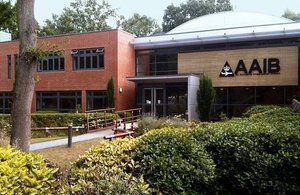The development of the air accident investigation regulations
On 28 June 2022 it will be 100 years since the first regulations were issued in the UK to formalise the investigation of aircraft accidents. Since then the regulations have been amended and revised numerous times in 1925, 1930, 1935, 1951, 1969, 1983, 1989, 1996 and 2018.

In 1951 the regulations were updated to reflect the newly issued international conventions on aircraft accident investigation as laid down by the International Civil Aviation Organization (ICAO). Accident investigation was laid down in Annex 13 of the International Civil Aviation Convention. These updated regulations removed the need for an open court formal investigation, instead having an “in private” “Inspectors Investigation”. An “Inspectors Investigation” would result in a completed and public report which would include any recommendations, similar to those that were previously issued by “the Court”. There remained, however, the possibility for a full public inquiry should the Secretary of State require one.
As the investigation was now done “in private” there was a provision to allow representations to be made if someone was likely to have blame attributed to them.
1951 also saw the formal designation of a Chief Inspector of Accidents. This is despite it being used informally for many years prior to this.
In 1969 the regulations made it clear on the purpose of accident investigation in avoiding future accidents and not to ascribe blame. The development of representations was further enhanced such that any person whose reputation is likely to be adversely affected shall be given the opportunity to provide representations within 28 day of being served a notice. This requirement for representations remains today in the 2018 regulations. These updated regulations followed various reviews of accident investigation such as the Newton Committee in 1948 and the Shelmardine Committee in 1945. The Cairns Report of the committee on civil aviation and licence control in 1961 contained many recommendations related to accident investigation in the UK.
As a result of the Cairns Report, the 1969 regulations introduced review boards where a person who has been served a notice may request any findings or conclusions to be reviewed by a review board. Only a few such reviews actually took place.
The 1969 regulations continued to include the ability to hold a public inquiry. The last such public inquiry under the 1969 regulations and indeed for an aircraft accident in the UK was following the accident to Trident 1 G-ARPI in 1972.
In 1983 the updated regulations were issued to align with the latest version of ICAO Annex 13 and refined the definitions of accident and serious injuries, and extended the powers of an Inspector. It also introduced the need to reopen an investigation if new or important evidence has been discovered.
In 1989 a small update created the term of “field investigation” and “formal investigation”, these were short lived, being removed in the 1996 regulations, but the terminology remains in AAIB parlance to show different levels of investigation.
In 1996 the regulations were significantly updated, again to reflect the latest version of Annex 13 but fundamentally introduced the need for the protection of relevant records except for accident or incident investigation. These records included witness statements and the cockpit voice recorder. It also removed the ability for someone to request a review board or for the Secretary of State to call a public inquiry.
In 2010 a European Regulation (EU 996/2010) was introduced that made most of the provisions in the 1996 regulations redundant, it was not until 2018 that the UK regulations were updated to reflect the European Regulation. These regulations followed the latest iteration of Annex 13 and set the standard for accident investigation across Europe. Following the UK exit from the European Union, the European Regulation were retained but amended to make them UK specific.
In the 100 years since the regulations were first issued, tens of thousands of investigations have taken place and several thousand recommendations made to prevent recurrence. Aviation safety has improved significantly as a result, but the principles laid down in those first regulations about finding out what happened and preventing further accidents remain today.